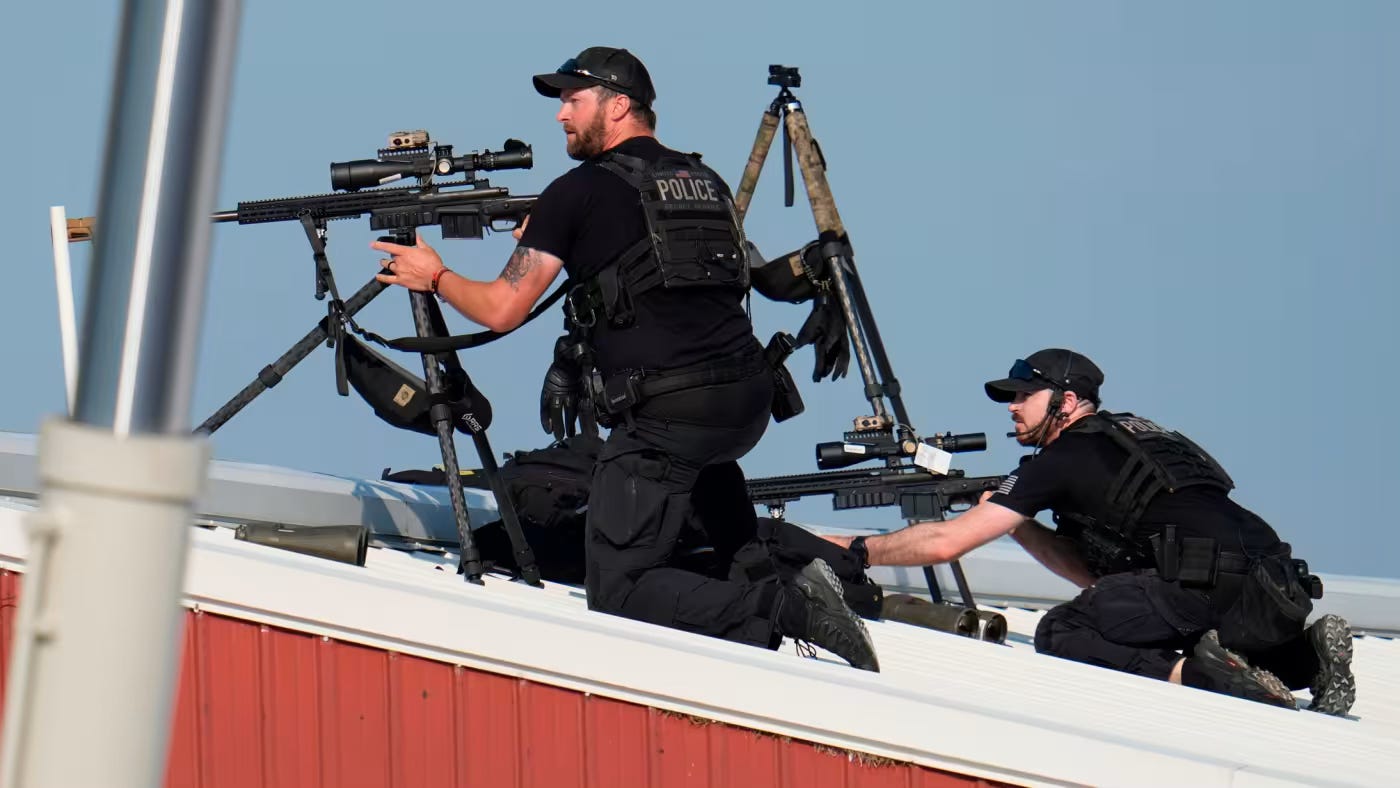A Contest of Force
Preliminary Observations on the Attempted Assassination of Donald Trump
We all knew this is where things were heading—that we’re going to start shooting each other. And it may not be the end, but the beginning.
Saturday, at a campaign rally for Donald Trump, a gunman fired several shots at the former president, grazing him in the ear and killing an audience member in the background before being killed by a police sniper.
I would normally invoke my own 72-Hour Rule and avoid commenting on a controversial shooting until at least three days have passed and we begin to get some solid information. I beg my readers to follow that general advice. For example, this clip has been going around in which a rally attendee tells a BBC reporter that he saw the shooter on a roof crawling into position and tried to warn the police and Secret Service but they somehow didn’t listen. Well, maybe it’s true. But it also seems a bit unlikely.
There’s a long history in these cases of eyewitness accounts—especially eyewitness accounts excitedly related to the media—turning out to be wrong. You might remember the riots ten years ago in Ferguson, Missouri, that were sparked by eyewitness reports to the media that a young black man was shot by a police officer while he had his hands up and was pleading, “Don’t shoot.” Hence the chant of rioters and protesters, “Hands up, don’t shoot.” But when a Department of Justice team arrived in Ferguson to investigate the case, they found that those “eyewitness” reports were made by people who could not possibly have seen the events they were so positive about.
A update on the Trump shooting, from a reputable source, offers a somewhat different timeline.
One local police officer climbed to the roof and encountered Crooks, who pointed his rifle at the officer. The officer retreated down the ladder, and Crooks quickly took a shot toward Trump, and that’s when Secret Service snipers shot him, said the officials, who spoke to AP on condition of anonymity to discuss an ongoing investigation.
This would explain why the shooter missed at a reasonably close distance. He was interrupted as he was setting himself up on the roof and took a more hurried shot. Again, maybe this is true. It’s from the Associated Press, not a conspiracy theory blog, but it’s possible even for a reputable source to pass along inaccurate or incomplete information at this very early stage.
Like I said, practice some discipline about what you read and how seriously you take it. A case like this is going to be flooded with speculation and conflicting reports for weeks or months.
But this story is important enough to require some preliminary comments, partly to help keep everyone’s heads screwed on straight. So my version of the 72-Hour Rule in this case will be to make a clear differentiation between what is speculative about this incident and its implications, versus what we can observe or project with confidence.
The big picture is that this takes us another step closer to turning politics into a contest of force. A political assassination is always a bad thing, but there are reasons why this case evokes a special element of dread.
Let’s take a look at the elements of this story.
They Tried to Kill Jimmy Carter, Too
The first thing we should bear in mind is that the shooter’s motive is still unknown—and it doesn’t really matter, anyway.
Keep reading with a 7-day free trial
Subscribe to The Tracinski Letter to keep reading this post and get 7 days of free access to the full post archives.


